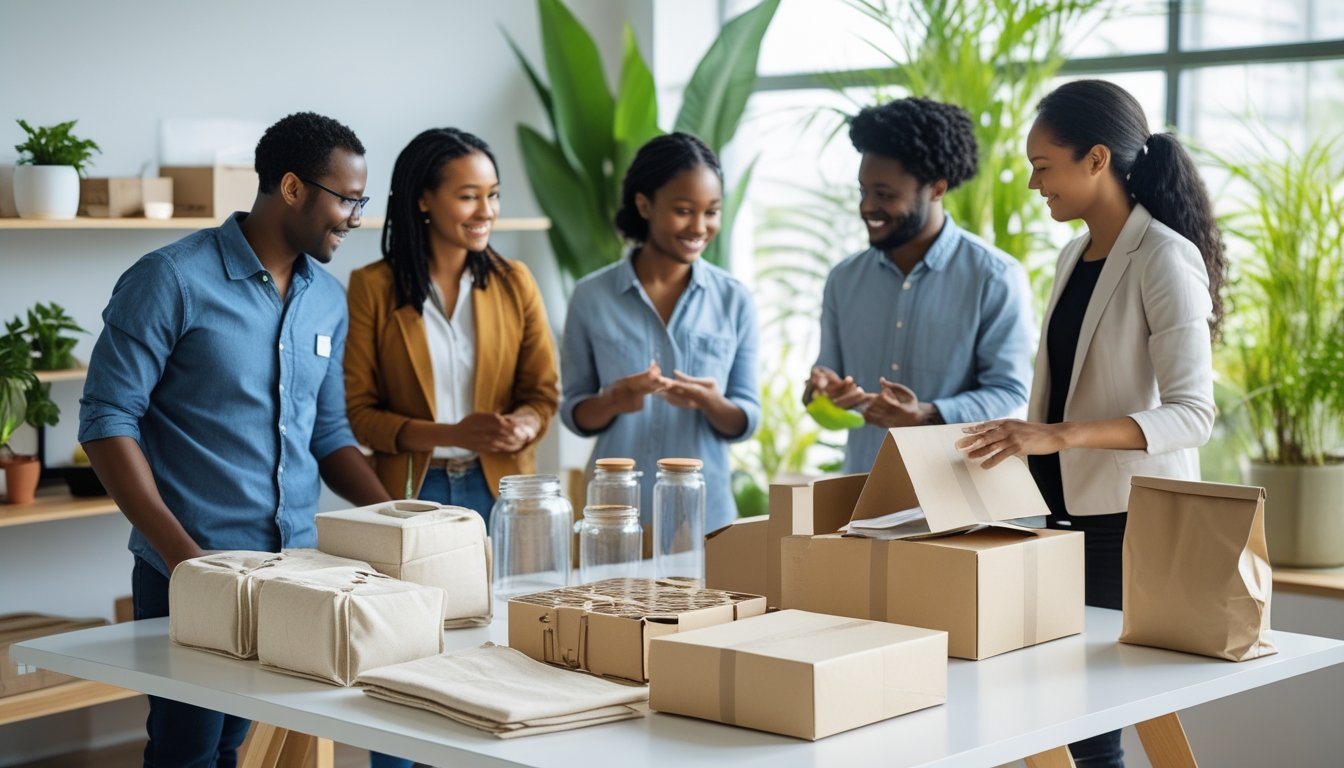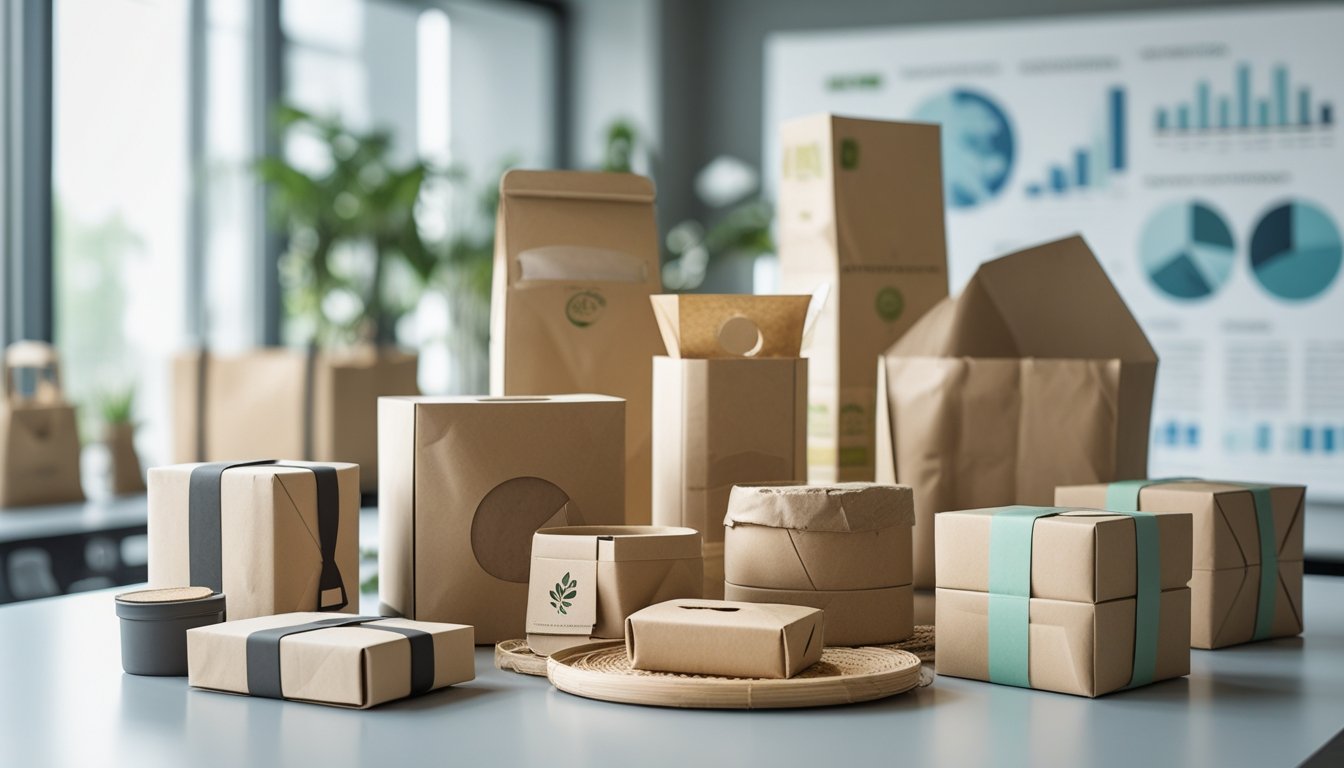Late updated: 06 Jun 2025 14:06
Written by: Sarah Hollister
Innovative Ways To Reduce Packaging Waste: Practical Strategies for a Greener Future
In today's world, the mounting challenge of packaging waste has become a critical environmental concern. As consumers, we interact with various packaging materials daily, often discarding them after a single use. To combat this inefficiency, innovative packaging designs have emerged, focusing on reducing, reusing, and recycling materials to minimise waste significantly. These advancements not only preserve resources but also enhance the longevity and practicality of packaging in our everyday lives.

Several companies are leading this change by developing packaging solutions that extend beyond single-use. For instance, businesses such as Loop and Adidas are pioneering reusable and sustainable designs, inspiring others to rethink traditional packaging concepts. By implementing materials that either biodegrade swiftly or serve dual purposes, these innovations ensure a reduced environmental footprint and cater to the conscious consumer.
The future of packaging lies in embracing sustainable practices and materials. Edible packaging alternatives made from seaweed or rice highlight an exciting frontier, offering a waste-free solution by allowing consumers to eat the packaging itself. Meanwhile, initiatives to use water-based inks and recyclable designs help forge a path towards a circular economy. As we navigate this evolving landscape, it's imperative to support and adopt creative strategies that align with sustainable development goals.
Key Takeaways
- Sustainable packaging reduces waste impact.
- Innovative designs offer reusable solutions.
- Edible and recyclable materials lead the way.
Fundamental Strategies for Reducing Packaging Waste
Reducing packaging waste is essential for lowering environmental impact and promoting sustainable solutions. By adopting practices such as using eco-friendly materials and enhancing recycling systems, we can significantly minimise pollution and the ecological footprint associated with packaging.
Embracing Sustainable Packaging Materials
Switching to sustainable materials is crucial in mitigating packaging waste. Biodegradable materials, like plant-based plastics, offer an environmentally friendly alternative. Compostable packaging, derived from renewable resources, can break down naturally, reducing long-term waste. Additionally, opting for recycled materials such as paper and cardboard supports a circular economy. By prioritising sustainable solutions, we can champion eco-friendly packaging options and help reduce the carbon emissions associated with traditional packaging.
Shifting to Reusable and Refillable Packaging Solutions
Emphasising reusable packaging options presents an effective method to cut down waste. Durable containers, such as glass jars or metal tins, enable continuous use and reduce reliance on single-use packaging. Refill stations and refills can offer consumers convenient access to products without generating additional waste. This shift promotes the adoption of more sustainable packaging solutions, reduces plastic waste, and lessens our environmental footprint.
Implementing Recycling Programmes and Infrastructure
Creating and enhancing recycling programmes plays a pivotal role in managing packaging waste. A robust recycling system ensures that recyclable packaging, such as glass, aluminium, and certain plastics, is effectively processed and reused. By investing in recycling infrastructure and conducting regular waste audits, we can optimise the recycling process and promote a culture of sustainable waste management within the packaging industry.
Minimising Single-Use and Unnecessary Packaging
Reducing single-use plastics and eliminating unnecessary packaging are vital for waste reduction. Minimalist packaging design can conserve resources by using fewer materials without compromising product protection. Eliminating excess packaging, especially materials that contribute significantly to plastic waste, is necessary for decreasing pollution levels. Through these efforts, we can align with green packaging solutions and foster an approach centred on environmental responsibility.
Innovative Packaging Designs and Case Studies

Innovative packaging is paving the way for more sustainable and efficient methods of reducing waste. This section highlights minimalist and smart packaging, novel materials, and corporate leadership in the circular economy. These diverse approaches are helping to redefine how we interact with packaging every day.
Minimalist and Smart Packaging Innovation
Minimalist packaging design focuses on removing unnecessary materials while maintaining functionality and durability. By employing a "less is more" philosophy, companies aim to reduce waste and enhance the user experience. Our own focus is on achieving a balance between eco-friendliness and aesthetics. Packaging innovation here often uses bioplastics and other compostable options.
Smart packaging incorporates technology to improve product information and security. Coca-Cola, for example, has explored ways to use QR codes.
Additionally, smart designs can enhance supply chain efficiency through real-time updates. Combining aesthetics with tech innovation optimises both sustainability and consumer interaction.
Novel Materials: Mushroom, Plant-Based, and Edible Packaging
Mushroom-based packaging is an emerging eco-friendly alternative using mycelium, offering biodegradable and protective properties. Similarly, plant-based and edible packaging are gaining traction.
These materials contribute to sustainable practices due to their biodegradable nature. Nestlé and Lush are researching ways to use these materials, which aim to replace conventional, environmentally harmful packaging.
Edible coatings could revolutionise food packaging by providing another layer of waste reduction. These materials offer not only sustainability but potential cost reductions for companies.
Corporate Leaders and Circular Economy Examples
Corporate giants such as Patagonia and Lush have shown leadership in adopting innovative packaging solutions. Lush's commitment to reusable packaging systems demonstrates their dedication to sustainable packaging design.
Meanwhile, Coca-Cola's initiatives in using ocean plastic and post-consumer recycled content help to highlight the economic benefits of upcycling and recycling.
Investing in upcycling demonstrates a shift towards a circular economy. By integrating these practices, companies ensure a reduced reliance on raw materials and support environmental sustainability.
Recognising our responsibility to the environment, the drive for sustainable solutions ensures not only a reduction in waste but also a commitment to the longevity of our planet.
Frequently Asked Questions

Our exploration of innovative methods to reduce packaging waste covers several crucial aspects. From primary waste minimisation techniques to pioneering sustainable materials, we delve into best practices and examples that significantly contribute to environmental sustainability.
What are the primary methods to minimise packaging waste?
Our primary methods involve right-sizing packaging to fit products snugly, recycling, and using biodegradable materials. These strategies reduce excess material and promote sustainable practices.
What are some examples of innovative packaging that contribute to sustainability?
Innovative solutions like glue dots replacing plastic rings in beer packs and laser etching on fruits to avoid paper labels exemplify packaging advancements.
How can businesses implement reduced-packaging initiatives effectively?
We can encourage businesses to conduct packaging audits, invest in reusable materials, and engage consumers through education about sustainable options.
What are the current innovations in sustainable packaging materials?
Some current innovations include compostable bioplastics, packaging made from mushrooms or seaweed, and materials designed for easy recycling.
In what ways is Amazon addressing the environmental impact of their packaging?
Amazon is implementing solutions like using recyclable materials and developing frustration-free packaging to reduce material use and waste.
What creative approaches have been developed to ensure packaging is more eco-friendly?
Creative approaches involve designing returnable packaging systems, integrating smart packaging for monitoring, and adopting minimalistic designs to decrease material use.
